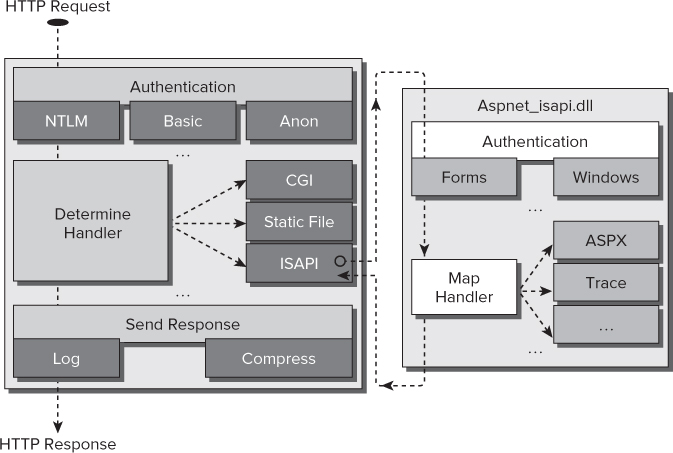ASP.NET and the IIS Pipeline
Prior to IIS 7.0, ASP.NET support was provided as an ISAPI filter only. As Figure 11.9 demonstrates, this implementation double-handled many stages of the request processing. Furthermore, some tasks were simply impossible to achieve within the ASP.NET framework. For example, it was not possible to use ASP.NET Forms authentication to manage static content like images without writing complex file-handling routines within the ASP.NET application or mapping images to the ASP.NET ISAPI extension.
Also, basic request processing like mapping the request URL to a local system resource had already been completed before even the ASP.NET framework was loaded, and therefore it was not previously possible to use ASP.NET code to execute tasks like modifying the raw request parameters (for example, rewrite URLs).
With the integrated request-processing mechanism, however, IIS 8.0 integrates ASP.NET natively, and thus the ASP.NET framework is more powerful and pervasive than ever before. With ASP.NET running natively, you can use Forms authentication to secure all content delivered by IIS 8.0, rewrite request URLs before they are mapped to local resources, and do much more that was never before possible using managed code.
Figure 11.10 shows how the integrated request-processing pipeline exposes more processing events to the .NET framework than ever before. ...
Get Professional Microsoft IIS 8 now with the O’Reilly learning platform.
O’Reilly members experience books, live events, courses curated by job role, and more from O’Reilly and nearly 200 top publishers.


